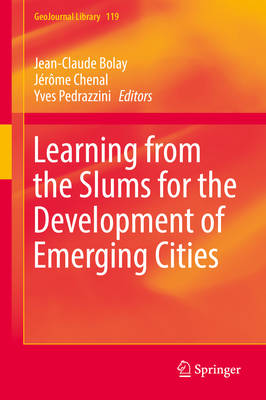
Door een staking bij bpost kan je online bestelling op dit moment iets langer onderweg zijn dan voorzien. Dringend iets nodig? Onze winkels ontvangen jou met open armen!
- Afhalen na 1 uur in een winkel met voorraad
- Gratis thuislevering in België vanaf € 30
- Ruim aanbod met 7 miljoen producten
Door een staking bij bpost kan je online bestelling op dit moment iets langer onderweg zijn dan voorzien. Dringend iets nodig? Onze winkels ontvangen jou met open armen!
- Afhalen na 1 uur in een winkel met voorraad
- Gratis thuislevering in België vanaf € 30
- Ruim aanbod met 7 miljoen producten
Zoeken
Learning from the Slums for the Development of Emerging Cities
€ 52,95
+ 105 punten
Omschrijving
This book deals with slums as a specific question and a central focus in urban planning. It radically reverses the official version of the history of world cities as narrated during decades: slums are not at the margin of the contemporary process of urbanization; they are an integral part of it. Taking slums as its central focus and regarding them as symptomatic of the ongoing transformations of the city, the book moves to the very heart of the problem in urban planning. The book presents 16 case studies that form the basis for a theory of the slum and a concrete development manual for the slum. The interdisciplinary approach to analysing slums presented in this volume enables researchers to look at social and economic dimensions as well as at the constructive and spatial aspects of slums. Both at the scientific and the pedagogical level, it allows one to recognize the efforts of the slum's residents, key players in the past, and present development of their neighborhoods, and to challenge public and private stakeholders on priorities decided in urban planning, and their mismatches when compared to the findings of experts and the demands of users. Whether one is a planner, an architect, a developer or simply an inhabitant of an emerging city, the presence of slums in one's environment - at the same time central and nonetheless incongruous - makes a person ask questions. Today, it is out of the question to be satisfied with the assumption of the marginality of slums, or of the incongruous nature of their existence. Slums are now fully part of the urban landscape, contributing to the identity and the urbanism of cities and their stakeholders.
Specificaties
Betrokkenen
- Uitgeverij:
Inhoud
- Aantal bladzijden:
- 247
- Taal:
- Engels
- Reeks:
- Reeksnummer:
- nr. 119
Eigenschappen
- Productcode (EAN):
- 9783319317922
- Verschijningsdatum:
- 9/08/2016
- Uitvoering:
- Hardcover
- Formaat:
- Genaaid
- Afmetingen:
- 159 mm x 242 mm
- Gewicht:
- 621 g

Alleen bij Standaard Boekhandel
+ 105 punten op je klantenkaart van Standaard Boekhandel
Beoordelingen
We publiceren alleen reviews die voldoen aan de voorwaarden voor reviews. Bekijk onze voorwaarden voor reviews.










